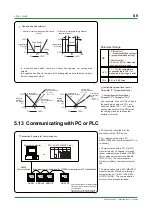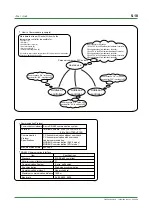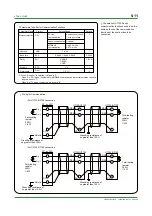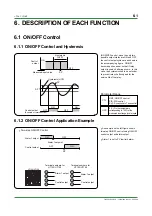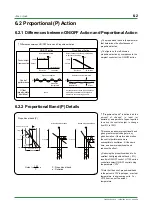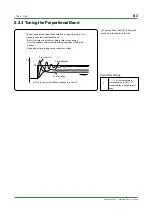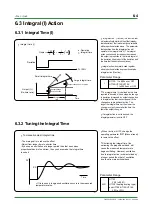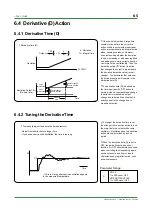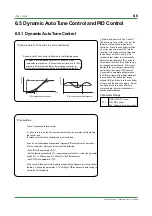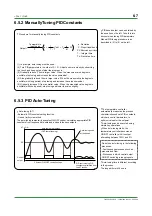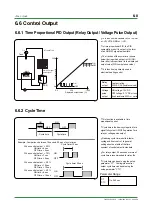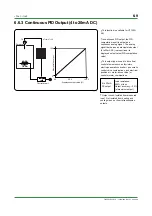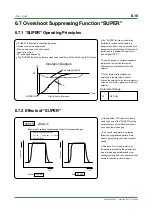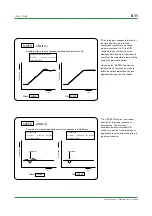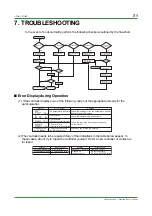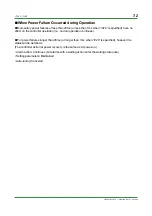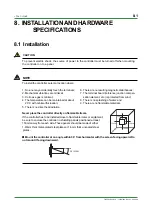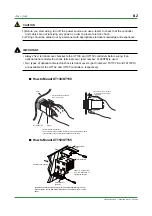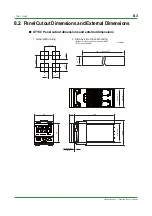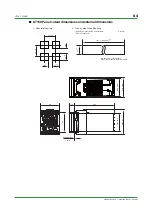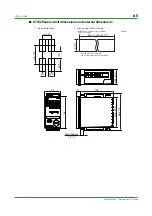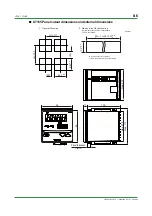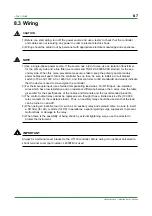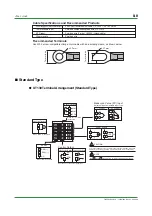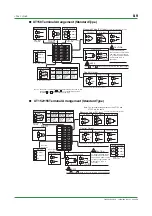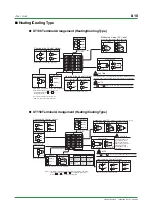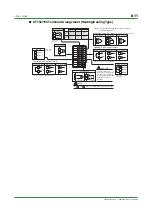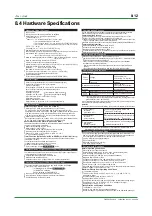
<Toc> <Ind>
6-11
TI 05C01E02-01E
1st Edition : Oct. 31, 2001-00
•
Due to the gain changes that occur at
the transition from ramp to soak,
conventional controls are inevitably
prone to overshoot. Yet, if the PID
constants are set so that the output
stabilizes more quickly in order to avoid
overshoot, the temperature ramp will lag
behind the prescribed pattern.
•
By using the "SUPER" function, the
temperature up ramp can be made to
follow the pattern almost exactly, and
significant savings can be achieved.
Example of ramp to soak transition overshoot suppression control
Process: Small electric furnace
P = 1.8%
I = 317 sec
D = 79 sec
(from auto-tuning)
SUPER effects (2)
T
emperature
Time
T
emperature
Time
Without SUPER
With SUPER
•
The "SUPER" function is extremely
effective for improving response to
disturbances. The overshoot
experienced with conventional PID
control in correction for disturbances is
significantly reduced, and settling time is
greatly speeded up.
Example of overshoot suppression control on response to disturbances
Process: Kiln
P = 6.2%
I = 311sec
D=77 sec
(from auto-tuning)
SUPER effects (3)
Without SUPER
With SUPER
Process: Kiln
P = 4.3% I = 684 sec
D = 171 sec
(from auto-tuning)
T
emperature
Time
T
emperature
Time
Disturbance
Disturbance
Содержание UT130
Страница 2: ...Blank Page ...
Страница 4: ...Blank Page ...
Страница 8: ...Blank Page ...
Страница 30: ...Blank Page ...
Страница 48: ...Blank Page ...
Страница 60: ...Blank Page ...
Страница 72: ...Blank Page ...

